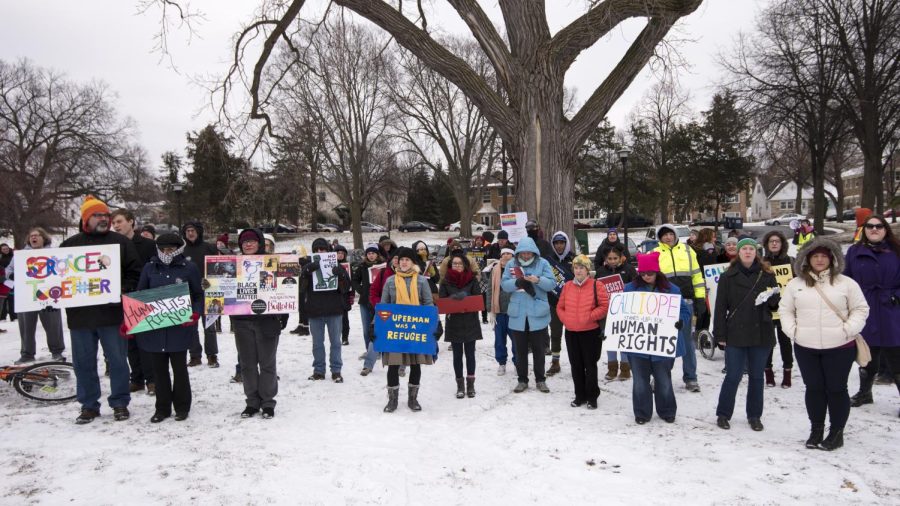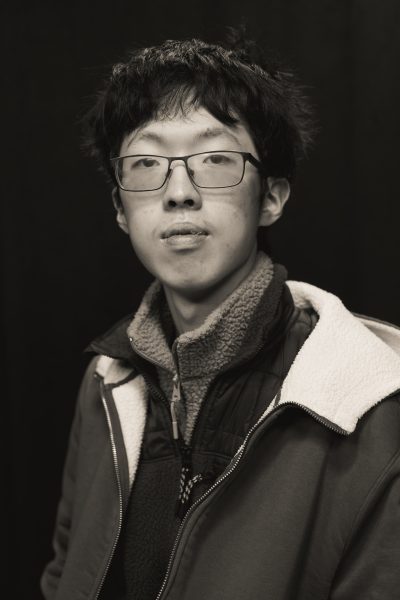Opinion: The Circle Analogy
Crimes committed by extremists must not tempt us to place blame on the larger communities of which they are a part.
Due to a lack of awareness surrounding the circle analogy, many big circles and their supporters are forced to fight against the blame caused by their little circles.
May 15, 2023
As any true American will know, pointing fingers and blaming the first person associated with a disaster is much easier than doing extensive research on a situation before forming an opinion. But what if–and I am aware of the absurdity of this statement to the average American–the actions of a loud minority of extremists in a community are not indicative of the nature of the whole community?
Sounds crazy right?
I was introduced to this outlandish idea from an unlikely source, a video made by gaming YouTuber, Karl Jobst. This video–a rebuttal to criticisms that Jobst made against the unethical business practices of companies, Wata Games and Heritage Auctions–features a clip from another YouTuber, DarkViperAU, precisely ten minutes and forty-four seconds into the video. In the segment, DarkViperAU creates a very interesting analogy by drawing a big circle and then a little circle inside it.
He explains, “This [big] circle represents the entire graded video games market…and this little circle here represents Wata Games and Heritage Auctions. Now if you look very closely, you should be able to see that this circle is actually smaller than the larger circle. This naturally being unsurprising because if you are a part of something, by definition, you are not the totality of that thing…because again, this is small circle, and this is big circle, you get it?”
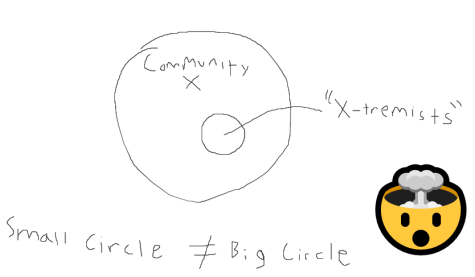
My mind was blown. Who knew that a small group of toxic extremists were–by definition–not representative of the entirety of the greater community? What if making unfounded assumptions on certain groups based on the actions of a destructive vocal minority within said group was wrong? Does this make me–as my history teacher would put it–a thinking American?
DarkViperAU’s revolutionary circle analogy led me down a rabbit hole of research. Just how many communities were falling victim to these tenuous accusations? How long has this even been going on?
As early as the 1940s, Americans have been quick to blame big circles for the actions of little circles. Following the bombing of Japanese Pearl Harbor–which brought the United States into WWII–President Franklin D. Roosevelt issued Executive Order 9066, which called for the imprisonment of “all people of Japanese descent, including U.S. citizens,” into internment camps.
But if the circle analogy holds true, then that would make this entire order immoral and unjustified. After all, the imperial Japanese government and military were only a little circle within the greater big circle that was the global Japanese population.
But alas, Roosevelt–and by extension, a significant portion of the American public–decided to do things the American way. Instead of investigating the facts and controlling their paranoia, they pointed their fingers at the entire population of Japanese Americans, many of whom had no affiliations with the little circle of extremists.
At this point, the ramifications of ignoring the circle analogy were starting to become more apparent to me, but I still wasn’t entirely convinced. After all, Roosevelt’s executive order was just one example that happened generations ago. However, further investigation led me to a glaring phenomenon of modern history that sold me on the importance of understanding the circle analogy.
In the wake of the tragic events of September 11, 2001, the American public was stricken with a mix of grief, anger, and vengeance. Naturally, spurred by a wave of American patriotism–and definitely not any ulterior prejudicial or power-hungry motives–American politicians began pointing their fingers at the big circle of Islam. This propaganda would prove successful.
According to an ABC News article written by Kiara Alfonseca, 40% of the American public still believed that the terrorist attacks were “motivated at least in part by religion,” despite the condemnations against Islamophobia made by President George W. Bush.
The “war on terror” initially seemed like a win-win scenario; America could take revenge on the masterminds of 9/11, and they could take the opportunity to crack down on a little circle of terrorists. Unfortunately, the paranoia of the American public, and the normalization of Islamophobia by American politicians caused most of the damage to fall not on the little circle of terrorists, but rather, on the big circle of Islam, even to this day.
I dug deeper into my research to find others who managed to reach the same revelation. But when I stumbled upon a massive wave of political turmoil spurred by a recent tragedy in Nashville, I knew the circle analogy clearly wasn’t clicking for a good portion of America.
On March 27th, the very same day of the shooting at the Covenant School in Nashville, commentator Benny Johnson, a podcaster for Turning Point USA, posted his assertion on the incident on both Facebook and Twitter.
Johnson stated, “The Colorado Springs shooter identified as non-binary. The Denver shooter identified as trans. The Aberdeen shooter identified as trans. The Nashville shooter identified as trans. One thing is VERY clear: the modern trans movement is radicalizing activists into terrorists.”
Johnson merely listed four shootings since 2018 that involved transgender and non-binary shooters. He then used these extreme incidents to paint a picture of the entirety of what he calls the “modern trans movement.” Unfortunately for Johnson, neither the math nor the circle analogy are in agreement with his claims.
Using a one proportion z-test, a common test of significance in statistics, I took a population proportion of an estimated 0.00482 for transgender Americans and a sample proportion of an estimated 0.00139 (based on the data provided by Johnson). I was able to calculate a z score of approximately -2.660, and a p-value of approximately 0.996.
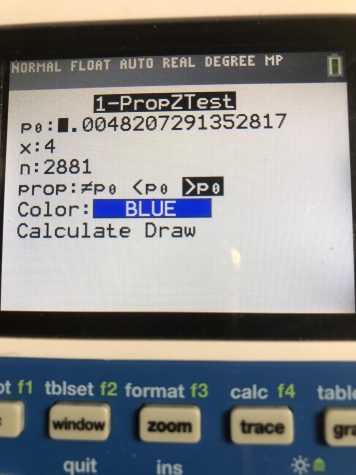
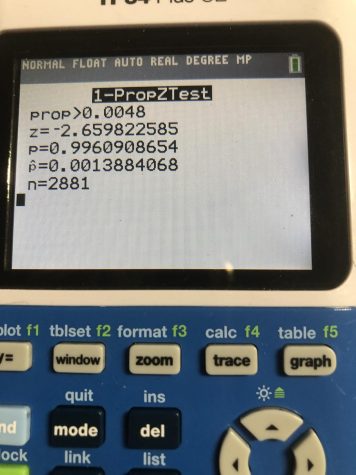
(The test suggests that the probability of having four transgender shooters out of all of the shooters since 2018 is approximately 99.6%, assuming the population proportion of all transgender Americans is as listed above.)
Now, as a good AP Statistics student, I do have to point out that since this was merely an observational study that did not control for potential confounding variables, my test was in no way conclusive. I also cannot forget to mention that this procedure lacked random sampling. But luckily, there’s no need to take it from me when there are experts who have already run the data using methods far more advanced than a basic one-proportion z-test.
Both Laura Dugan, a professor of human security and sociology at Ohio State University, and James Alan Fox, a statistician and professor of criminology, law, and public policy at Northeastern University, have presented evidence that debunks Johnson’s claims.
“We cannot statistically make any claim of a trend,” Dugan stated.
Additionally, while not intentionally doing so, Fox used her studies to arrive at her own interpretation of the circle analogy.
“There are a lot of mass shootings, hundreds of mass shootings, and to cherry-pick four of them and say here’s a trend, that’s wrong. You can’t make a conclusion that that’s significant. It is not significant in any statistical sense,” Fox stated.
There is simply no evidence to suggest any potential falsity to the circle analogy; the little circle is still not indicative of the big circle.
The whole journey of discovering, understanding, and accepting the circle analogy was a treacherous one indeed. It was hard having to get used to not automatically pointing my finger at entire communities for the sparse crimes of extremists. It was hard having to accept the fact that such extremism only seemed so widespread because talking about it in the news was merely the best way for politicians to earn clout — and re-election.
I am now a true believer in the circle analogy, and I believe its importance should be taught and emphasized on a greater scale. I am no longer merely an American; I am now a thinking American. Now the question remains: who’s going to join me?
______________________________________________________________________________________________
Editors’ note: All opinions expressed on The Uproar are a reflection solely of the beliefs of the bylined author and not the journalism program at NASH. We continue to welcome school-appropriate comments and guest articles.


